
By Bianca Schlotterbeck
CNBC.com
The London 2012 Olympics are only six months away, and excitement is ramping up. Yet besides putting on a stunning spectacle starting in late July — and the pride of winning gold medals for Team Britain -- London must contend with the aftermath of the Games. This cannot be measured purely by cost alone but by the benefits or problems the Olympics leave in their wake.
The finest Olympics revitalize rundown districts, inspire young people into sports and leave a city with fantastic sites and a healthy profit; Barcelona is a good example. The worst leave nations crippled by debt and half-dead venues – look no further than Athens.
 |
| Slideshow: Olympic Cities: Booms and Busts |
The Olympic legacy London hoped for when it won the bid in 2005 was to inspire a new generation of sportsmen and women and to regenerate a rundown area of East London, without the facilities being a drain on public finances. Prime Minister David Cameron told a recent news conference he expected the Games to generate at least $1 billion for British businesses.
So far six of the eight Olympic venues have secured their future, but the prospects for the centerpiece of the 2012 games -- the Olympic Stadium, which cost an estimated $760 million to build -- remain uncertain. This is also true for the Olympics Press and Broadcast Centre.
Whether the games will boost young people's participation in sports is less clear. The chairman of the British Olympics Association, Colin Moynihan, recently told the Observer newspaper that since the U.K. won the 2012 bid, politicians have failed to honor pledges to drive through a national sporting revolution. Unless there was a last minute change in policy, he said, the games would spur little improvement . As for the cost, it is looking increasingly likely that London will breach its $14.3 billion (£9.3 billion) budget because of rising transport and security costs.
It is too late now for London to learn from the experiences of previous host cities, but the lessons are clear to see. Check out some examples of winter and summer Olympic booms and busts.
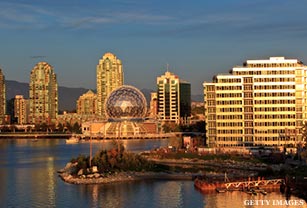
Vancouver 2010
Bust. Hosting the Winter Games in 2010, Canadian athletes won a record of 14 medals. The city of Vancouver did not feel quite so lucky when left with a nasty financial hangover. The cause was the Olympic Village (pictured here), which was financed by the city after the developer ran into trouble because of the credit crunch. The government hoped it was backing what would become one of the greenest, most sought-after residential areas in North America. Yet two years on, the city is still trying to recover its costs by selling the luxury condos in the 16 buildings that make up the village (renamed Millennium Water). When the debts rose to $730.2 million (C$743 million), the project was pushed into receivership. Now under the auspices of Ernst and Young, it has begun filling up the empty suites and the debt will reduce with future sales. The $170 million owed on the land purchase will probably never be recovered.

Beijing 2008
Boom. Although the Beijing Olympics were the most expensive Games on record, costing about $40 billion, they did not leave the country in debt. China had enough capital to pay for the new stadiums, subways and roads to make the Games a success. Beijing benefited the most from these improvements to its infrastructure. New highways, subways and an airport terminal as well as public spaces and parks brought much-needed investment to the city without leaving it in a financial mess. Most of the Olympic venues in Beijing went on to have long-term use. For example, one facility was dedicated to the China Agricultural University and another to the Beijing Science and Technology University, ensuring their continued benefit to the city. However, the landmark Bird's Nest national stadium, remains largely empty from little use.

Salt Lake City 2002
Boom. The Salt Lake City Winter Olympics was one of the most expensive of all time, coming close to the cost of hosting the summer Games, at $2 billion (including $500 million for security). However, organizers claimed a $100 million profit as a result of lucrative television deals and the legacy of the games was to bring dozens of new faster lifts and thousands more hectares of skiable terrain to the region. Traffic on the slopes was up by 37 percent in the six years after the Games, turning Utah skiing into a $1 billion industry.
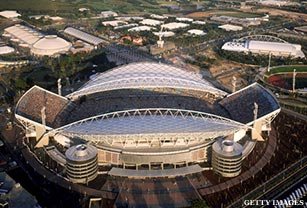
Sydney 2000
Bust. Although Sydney put on very well organized and popular games, the benefits of the Olympics to the city have been small. The organizers of the Games overshot their budget in a familiar Olympic fashion: It almost tripled to $3.8 billion before the competition had begun, for which the public ended up paying about a third. According to reports by The Independent newspaper, Sue Holliday, the former chief planner for the Sydney Games, told a conference that the host city should have focused more broadly on a legacy program for the Olympic site. "Sydney is now paying the price," she said. The centerpiece for the Games, the Sydney Olympic Park, became yet another white elephant, with a plan for its use not made until 2005. Studies have also shown that the Olympics did not do much to attract tourists to Sydney or boost participation in sports.
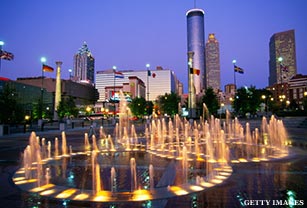
Atlanta 1996
Boom. Although the Games were at times chaotic, marred by transport problems, a pipe bomb that killed a visitor and criticized for being overly commercial, Atlanta has one of the strongest Olympic legacies. The commercial sponsorship of the Games, which cost around $1.8 billion, meant that Atlanta broke even and was not left with large debts. The two arenas constructed for the Games were developed with their after-use in mind and are now home to the Falcons and Braves. But it was how the Games regenerated Atlanta's inner-city areas that left the biggest mark. Centennial Olympic Park, was built in what was a rough part of town and is now a centerpiece of downtown Atlanta's revitalization, with several major high rises, museums and attractions built on its periphery and 20 percent of the tax generated going to poorer areas.

Calgary 1988
Boom. There was a lack of transparency about the cost of the Calgary Winter Olympics. Under pressure not to be the second Olympics in Canada to make a loss, after the financial disaster that was the Montreal 1976, the organizers claimed that the Games made a profit of between $90 and $150 million. This came undone after a private investigation by the Toronto Star revealed that Calgary's organizing committee omitted the costs of building sports facilities from its figures as well as $461 million in government subsidies. With this money added in, the Games made a financial loss. Nevertheless the Calgary Winter Olympics delivered a substantial sporting legacy, state-of-the-art sports facilities, most notably the Olympic Oval -- the world's first fully enclosed speed skating rink, which would produce a steady stream of future Canadian Olympians.
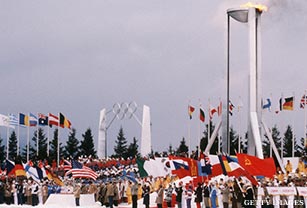
Lake Placid 1980
Bust. The Winter Olympics of Lake Placid was hit by a number of problems. Poor planning of ticket sales (people could not buy unsold tickets as they needed a ticket to get to the ticket sales area) and transportation and accommodation difficulties meant that there was a narrowly missed catastrophe in getting visitors to the Games. A state of emergency had to be declared and more buses and drivers imported to shuttle people to the Olympic venues. However this was not the only bailout needed. The Games ended with an $8.5 million deficit and the Lake Placid Olympic Committee drafting bankruptcy papers; only a last minute intervention from the State of New York saved it from financial disaster.
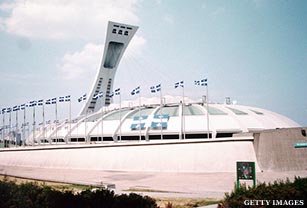
Montreal 1976
Bust. One of the most infamous busts, the 1976 Summer Games in Montreal had the legacy of taking three decades to repay its debts and deterring many other countries from bidding for the Olympics for many years. Before the Games the city's mayor, Jean Drapeau, declared: "The Olympics can no more have a financial deficit than a man can have a baby." But the debt on the Olympics rose to $1.5 billion, and it took Quebec until 2006 to pay off, by which point the Olympic stadium had been given the nickname "The Big Owe." Construction on the Olympic stadium was not completed by the time the games begun due to problems with the unusual design and strikes by the workers. During the games and for 11 years afterwards the stadium did not have either a tower or a roof, which were finally completed in 1987.
Click here for CNBC's complete slideshow of the Olympic Cities: Booms and Busts.
-- Questions? Comments? Email SportsBiz@cnbc.com. Or check out more Sports Biz with Darren Rovell.
Popular Stories On ThePostGame:
-- The NFL's 10 Most Successful Cheerleading Squads 2012
-- Tim Tebow's Autobiography 'Through My Eyes' Is 2011's Best Selling Sports Book
-- One-On-One With CNBC's Erin Sharoni
-- Best-Selling NFL Jerseys







